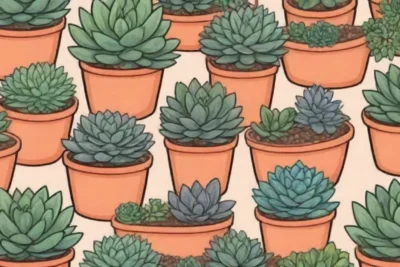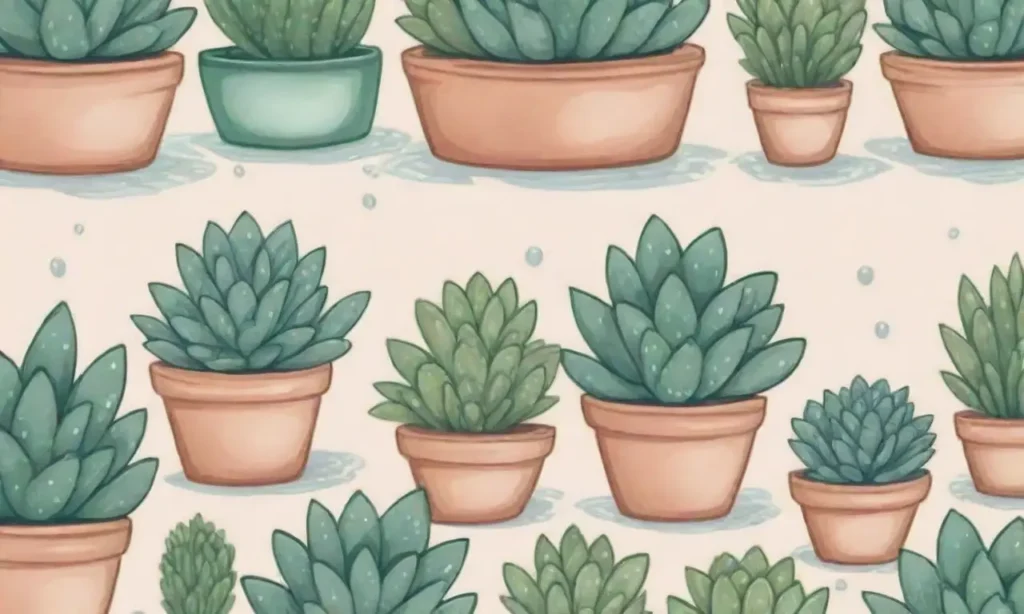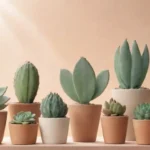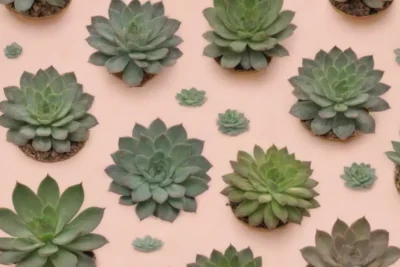
Watering Succulents: What to Do When They Are Dormant

Introduction
Succulents have surged in popularity among plant enthusiasts and casual gardeners alike, thanks to their striking appearance and relatively low maintenance needs. These versatile plants, which store water in their leaves, stems, and roots, typically thrive in dry climates. However, they go through dormancy periods, during which their growth slows down significantly. Understanding how to care for succulents during these times, especially when it comes to watering, is crucial for keeping them healthy and vibrant.
In this article, we will explore the key aspects of succulent dormancy, including the environmental factors that trigger it, the specific watering techniques to employ during these times, and best practices to follow for overall succulent care. By the end of this guide, you'll be equipped with the knowledge to effectively care for your succulents, ensuring they remain healthy and ready to thrive once they exit dormancy.
Understanding Succulent Dormancy
Succulents, much like many other plants, experience a natural dormancy cycle. This phase often coincides with seasonal changes, specifically during the winter months. It's important to note that not all succulents go dormant simultaneously; the specific timing can vary based on the species and environmental conditions. During their dormancy, succulents conserve energy and reduce water intake, leading to minimal growth until the conditions become favorable again.
The primary factors influencing dormancy in succulents include temperature, daylight exposure, and humidity. In cooler temperatures, many succulents naturally slow down as a protective mechanism against frost damage. Similarly, reduced daylight hours during autumn and winter signal to the plant's internal systems that it's time to enter a resting phase. Additionally, lower humidity levels in the air can also trigger dormancy, particularly in varieties that thrive in dry environments.
Recognizing the signs of dormancy is essential for proper plant care. Common indicators include shriveling leaves, reduced growth, and a general inability to form new leaves or flowers. If you notice these symptoms, it’s likely that your succulent has entered dormancy. This period can last anywhere from a few weeks to several months, depending on the plant species and environmental conditions.
Watering Techniques During Dormancy
Reduced Watering Frequency
One of the most critical aspects of caring for succulents during their dormancy is adjusting the watering schedule. When these plants enter a dormant state, their water requirements dramatically decrease. Overwatering can be detrimental, leading to root rot and eventual death. It's essential to be mindful of the frequency and amount of water you provide during this time.
A good rule of thumb is to water your succulents only when the soil is completely dry. Checking the soil's moisture level is simple—just stick your finger about an inch deep into the soil. If it feels dry, it’s time for a light watering. However, if it still feels damp, it’s better to wait a few more days before checking again. During dormancy, many growers only water every few weeks, sometimes even monthly, depending on the specific plant and its environment.
 Light Requirements for Dormant Succulents: Adjusting Your Setup
Light Requirements for Dormant Succulents: Adjusting Your SetupTo further enhance your watering strategy, consider the soil type in which your succulents are planted. A well-draining soil mix with perlite or sand will allow for better airflow and moisture retention, further reducing the risk of water accumulation at the roots during dormancy. This type of soil is vital for cultivating healthy succulents as it mimics their natural growing conditions, where water drains quickly after rainfall.
Water Quality and Method
In addition to adjusting watering frequency, the quality of water used can also play a significant role in succulent care during dormancy. Rainwater or distilled water is often ideal for succulents, as tap water may contain chemicals like chlorine or fluoride which can be harmful over time, particularly when the plants are in a fragile state during dormancy.
When watering succulents, aim to apply moisture directly to the soil while avoiding the leaves and stems. This practice minimizes the risk of fungal infections, which can thrive in damp conditions. Watering at the base of the plant ensures that the roots receive the necessary hydration without exposing the foliage to excessive moisture.
It's advisable to water succulents thoroughly but infrequently, allowing excess water to drain out of the pot’s drainage holes. Proper drainage is essential, as stagnant water can lead to root rot—a leading cause of poor succulent health. By allowing the soil to dry out entirely between waterings, you help your plants maintain their health and vitality, even during their dormancy.
Signs of Overwatering and Underwatering
Understanding the signs of overwatering and underwatering is key to maintaining the health of your dormant succulents. One of the most evident signs of overwatering is leaf drop, where leaves become mushy and fall off the plant. In addition, the leaves may appear transparent or squishy, and the roots may develop a brown, mushy texture if you inspect them.
Conversely, if you notice that the leaves are wrinkled, shriveled, or dry, your succulent may be lacking water. A healthy succulent should have plump, firm leaves, with enough moisture to maintain its shape. In a dormant state, it’s natural for the plant to lose some moisture; however, excessive wrinkling can indicate that the plant is not receiving enough hydration.
The key takeaway is to be vigilant about observing changes in your plants. Frequent checks and careful monitoring of moisture levels, alongside a keen eye for changes in appearance, will provide the insights needed to maintain the optimal health of your succulents through their dormancy period.
 Does Every Succulent Experience Dormancy? Exploring Varieties
Does Every Succulent Experience Dormancy? Exploring VarietiesBest Practices for Succulent Care during Dormancy

Environmental Conditions
Providing the ideal environment for succulents during their dormancy is just as crucial as managing watering schedules. Temperature plays a significant role in a plant's wellness; most succulents do best in temperatures ranging from 50°F to 70°F during the winter. If your home is cooler, it may be beneficial to move your plants closer to a light source or consider a heating mat to maintain a more consistent temperature.
Furthermore, succulents rely on adequate light exposure to thrive. While they do experience dormancy, it doesn't mean they should be completely deprived of light. Place your plants in a location where they can receive indirect sunlight, such as near a south-facing window. If you live in an area where natural light is limited during the winter months, consider using grow lights to supplement your succulents' needs.
Humidity is another factor to consider, as many succulents prefer drier air. If your indoor environment tends to be humid, ensure adequate air circulation around your plants and avoid placing them where moisture might build up. This can be achieved using fans or opting for a room with good airflow. Good air circulation will prevent issues related to mold or pests, helping your plants remain free from diseases.
Seasonal Fertilization Adjustments
During dormancy, the plants' nutrient needs are drastically reduced, and fertilization should be kept to a minimum. In fact, many succulent enthusiasts recommend halting any fertilization during the dormant season altogether. Fertilizers contain nitrogen and other nutrients that promote new growth, which can counteract the plants' natural dormancy responses.
When your plants begin showing signs of waking up in the spring, resuming a diluted fertilization program can be beneficial. Using a balanced, diluted succulent fertilizer can help support healthy growth. However, always ensure to apply it during the active growing season rather than during dormancy. To avoid overdoing it, stick to a once-a-month schedule, and ensure the plants have had a good watering before applying any fertilizer to prevent root burn.
If you're hesitant about feeding your dormant succulents, remember that a well-draining soil with organic matter should provide sufficient nutrients to sustain them during this time. Your focus should be primarily on irrigation and maintaining proper environmental conditions to set your plants up for a healthy revival when spring arrives.
 The Artistic Side of Dormancy: Photography and Succulents
The Artistic Side of Dormancy: Photography and SucculentsMonitoring for Pests
Even during dormancy, pests can pose a threat to your succulents. It's crucial to monitor your plants for common issues like mealybugs, aphids, or fungus gnats. These pests can thrive in stagnant air or overly moist conditions, making them more problematic if proper precautions are not taken. Regularly inspect the leaf undersides and soil for any signs of infestation.
If you notice any pests, act quickly to treat them. For mealybugs or aphids, a simple solution of mild soap and water can be effective in removing them. Spray or wipe down affected areas, ensuring that you reach the hidden spots where these pests love to hide. Additionally, introducing beneficial insects like ladybugs can help keep pest populations in check without the need for harsh chemicals.
Regularly cleaning the leaves of your succulents with a soft cloth can help prevent pests and encourage healthy growth by removing dust, which can block sunlight. Also, keep the surrounding environment clean, ensuring that debris does not accumulate around your plants, as this can attract unwanted pests.
Conclusion
Caring for dormant succulents requires a comprehensive understanding of their unique needs during this phase of their life cycle. Adjusting your watering schedules, creating the ideal environmental conditions, modifying fertilization practices, and consistently monitoring for signs of stress or pests are all vital steps to promote their health and strength. By gently reducing water frequency, ensuring adequate light and air circulation, and observing the plant’s responses, you set the stage for a successful transition from dormancy back to robust growth.
With a mindful approach and a keen eye, you can navigate dormant periods seamlessly and foster resilient succulents that will reward you with lush foliage and blossoms during their active growing season. Remember, knowledge is your most powerful tool when it comes to nurturing plants. Embrace the process, be patient, and enjoy the gratifying rewards that come from successfully caring for these beautiful, adaptable plants. Whether you're an experienced botanist or a beginner, understanding the specifics of watering succulents during dormancy is the key to a thriving collection that will continue to impress for years to come.
If you want to read more articles similar to Watering Succulents: What to Do When They Are Dormant, you can visit the Dormancy Period category.



You Must Read